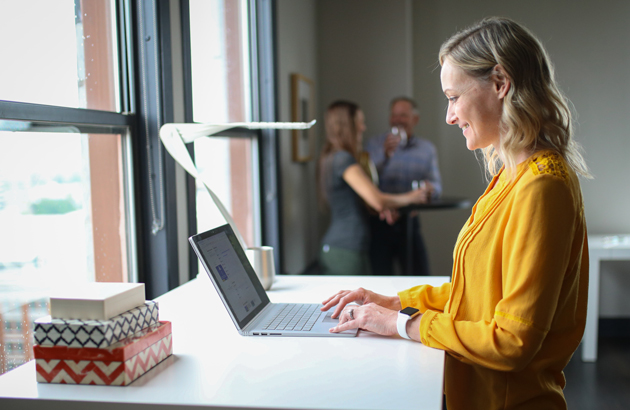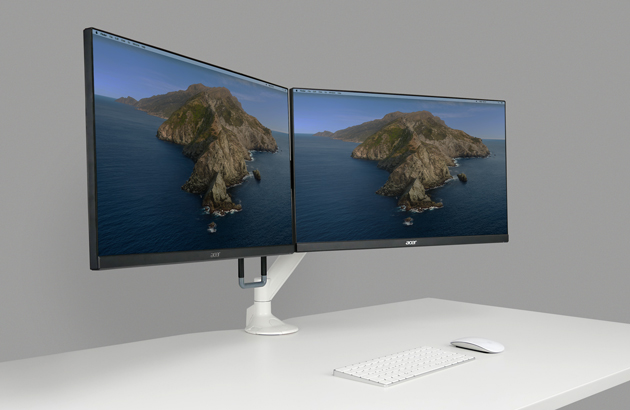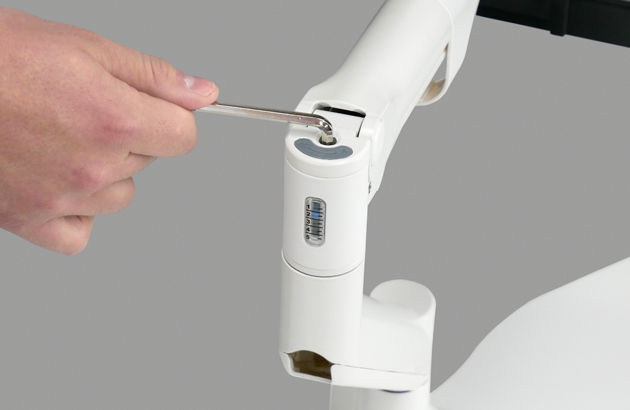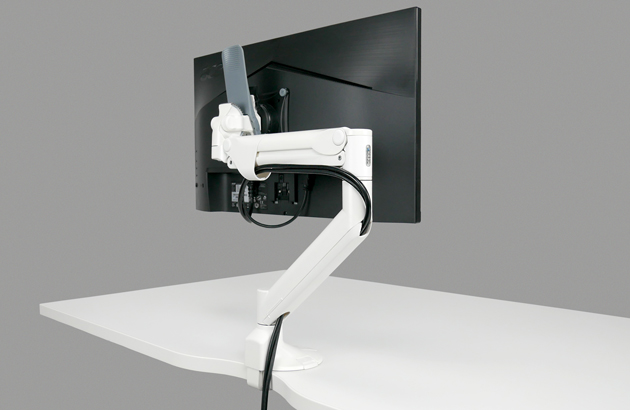Choosing the right monitor arm is important to ensure your workspace setup is ergonomic, flexible and lasts. We’ve outlined below a few things to consider before buying a monitor arm:

If you sit to work, remaining in the same position, you will likely find that a pole-mounted monitor arm is sufficient for your work space. Products like Kardo and Duro from Metalicon are easy to setup and adjust to get your screens set exactly where you need them.
If you sometimes stand to work and use a use a sit/stand height adjustable desk you will need to adjust the height of your screen(s) to suit whether you are sitting or standing. The position (height and tilt angle) of your displays will likely need to change as you sit or stand. Contrary to popular belief it’s not simply a case of raising/lowering the whole workstation or desk surface.
For sit/stand working you will need an easy to adjust gas lift monitor arm that offers a seamless transition between the two. Check out the Levo or Libero monitor arms from Metalicon.

Monitor arms are available to mount multiple screens. Ministry of Ergonomics offer monitor arms for a single screen, right up to heavy duty six screen setups. If you just want to raise the height of your laptop computer all our single monitor arms can be adapted to hold a laptop with the Metalicon Universal Laptop Holder.
If you want to use your laptop as a second screen and line it up alongside your existing display we recommend a combination of Kardo Single and Kardo Inverted arm with the Laptop Holder attachment. This is because the arm for your laptop will need positioning lower than the arm for your screen.

Most monitor arms will have a maximum screen weight capacity. You will need to ensure that the monitor arm you choose can comfortably support your screen. If your monitor arm is holding multiple screens you’ll need to consider the total weight capacity. Computer monitor manufacturers normally display the screen weight in the product specification or technical details.
Quality gas lift monitor arms will include tension adjustment so you can set the arm to suit the exact weight of your screen. The Levo monitor arm includes a tension indicator which is really handy if you have multiple arms and screens to install in your office or workplace.
Some monitor arms that work through tension, like a ‘gas lift’ and ‘gas sprung’ or arms that use springs will also often have a minimum screen weight. This is because the arm requires a certain amount of applied weight to function properly. If you find your spring mount or gas lift monitor arm won’t stay in position (and you’ve exhausted the tension adjustment) it could be your monitor is too light.

VESA (Video Electronics Standards Association) is an interface standard to attaching displays and monitors to mounts. Most monitor arms use VESA mounting plates to attach your screens. This will require your display to have the necessary screw holes at the back.
All the monitor arms we sell use the VESA MIS-D standard which means the screw holes are in a square 75mm or 100mm apart.
Some monitors are not VESA compatible and only work with the custom stands shipped with the screen from the manufacturer. Apple displays aren’t VESA compliant so you’ll need to purchase the VESA Mount Adapter.

You need to consider how you will mount your monitor arm to the desk. Desk-edge clamps (or ‘C clamps’) are most popular because they allow you the flexibility to reposition the arm where you wish. However this is not always possible, for example if your work surface is fixed to a wall.
A through-desk (or ‘grommet’) clamp allows the arm to be mounted over a small hole, wide enough for the clamp bolt to pass through. Often existing cable port holes, popular in traditional desk designs, can be used for this purpose.
The Metalicon Levo arm has been cleverly designed to accommodate both mount types in one base which can be reconfigured the cables to pass through, rather than behind.
Some monitor arms offer wall mounting, much like television brackets but we don’t recommend this as it is difficult to reposition the monitor arm and isn’t suited to sit/stand working.

Whilst not essential, cable management is a really handy addition to any monitor arm, keeping power and data cables neatly tucked away. It also makes relocating the monitor arm setup much easier. Monitor arms with high capacity cable management will accommodate all the power and data cables for your displays. Levo from Metalicon offers integral cable management to keep them out of sight. Kardo and Duro use a simple clip system that is really quick to use.
You can extend the cable management underneath your desk with our range of cable management accessories including the flexible Metalicon Linx cable spine.
If the look and feel of your workspace matters you should consider the colour of monitor arm. You could choose to have it the same colour as your display screen or match the colour of your desk so it’s hardly noticeable. Kardo and Levo monitor arms from Metalicon are available in black, white and silver in a matt finish.
If you require any further advice with choosing the right monitor arm please get in touch with our team who’d be glad to help you